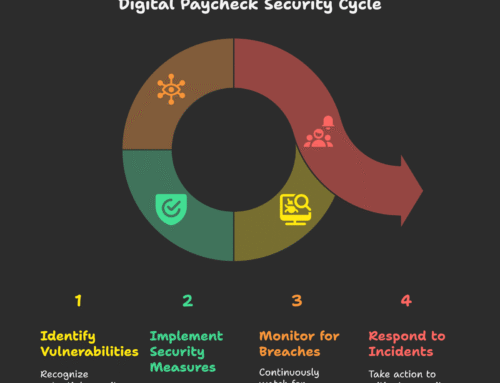Ensuring that the office is a safe environment is an investment every employer needs to make. Workplace safety means that companies implement safety protocols during emergencies, provide security to deny entry to unauthorized individuals, and develop cybersecurity measures to deter hacking and damaging sensitive data. These security measures help employees feel safe and secure in their work environment, increasing employee retention, providing a return on investment, and saving the company money.
When employees feel safe and secure in their workplace, they have an incentive to stay and their productivity heightens, which can benefit the company financially. If employees don’t get injured on the job, employers can avoid lawsuits and damage to their company image. When data and sensitive information is secure, companies avoid financial repercussions and additional work of having to recreate these data. These are just some of the benefits of ensuring workplace safety.
If you’re a business owner, and you want to reap these benefits and ensure a safe working environment, below are nine best practices you can follow.
Make Employees Wear Visible Identification
Wearing a piece of visible identification can help deter intruders from entering the workplace. Making everyone wear their ID cards attached to custom lanyards with the company’s color and logo will help security guards identify employees. This can help security personnel easily verify an individual’s identity before allowing them to enter the office premises.

Domino effect photo created by mindandi – www.freepik.com
Develop a Communications Platform for Employees
Safety procedures are usually written down in thick manuals. These books are hard to read and access during an actual emergency. Having an online communications platform, where safety guidelines are simplified, accessible, and easy to update, can help people in the office navigate emergencies more quickly. This platform can also have a messaging and notification system that will send out alerts to all employees during emergencies. Through these alerts, everyone can act accordingly in times of trouble.
Conduct Safety Seminars
Safety seminars ensure that all workers in the office know what to do in times of emergencies. Conduct these seminars regularly, especially when safety procedures get updated so that every employee knows how to apply the new safety protocols. Ensure that supervisors and managers join in these safety seminars as well to inspire employees to participate.
Install Electromechanical Locks
An office is vulnerable during a power outage, especially if many of the doors are electronically locked. A power outage can attract intruders or lock employees inside the office. Avoid these problems by installing electromechanical locks on doors. A fail-safe lock will unlock the door when it cannot detect power, allowing employees to leave the office despite the lack of electricity. Meanwhile, a fail-secure lock seals the door when electricity cannot be detected, restricting access to a room.
Ensure Good Lighting in the Office
Good lighting can discourage unauthorized individuals from entering the office premises. As the lights can make their presence known, intruders will generally avoid well-lit spaces. Aside from deterring intruders, well-lit spaces can help employees see where they’re going, which can help them avoid accidents such as tripping or slipping on the floor. Good lighting is especially recommended for stairwells and storage rooms.
Utilize Security Cameras
Security cameras can help prevent intruders from entering the workplace. Some security cameras have software features that can record and identify individuals as they enter the office. If someone suspicious does enter the office, security cameras can help pinpoint the time of their entry and exit as well as record what they look like, which can help during an investigation.
Regularly Back up Important Files
Companies with sensitive data and documents should perform regular backups to ensure these documents never get lost or damaged. Have three copies of an important file: two digital copies and one physical copy. Store the digital files on different platforms, such as cloud-based storage and one in the office’s local server. Keep physical copies safe in a fireproof room and restrict access to employees with proper clearance.
Properly Dispose of Sensitive Documents
Physical documents with sensitive information can be left exposed in offices. Employees can accidentally leave files on printer trays or their desks. They can have sensitive information written on whiteboards and notice boards. These accidental exposures can leave the company vulnerable, especially when non-employees, like couriers and maintenance crew, get access to office spaces.
Remind employees to shred and destroy documents with sensitive data to make sure that nothing is accidentally leaked outside of the company. Ensure that they also erase information on whiteboards and notice boards.
Encourage Feedback from Employees
Employees will often have ideas or opinions on how the office can be safer for them. Encourage them to share these ideas with the company. Employers can do so by asking everyone to speak up or by providing feedback forms. Gathering feedback can be done during safety training, where employees can see the gaps in specific safety protocols.
If employees aren’t forthcoming with their feedback, employers can assign a safety officer who is of the same level as certain groups of employees. Employees might feel that their input isn’t that important, so they won’t feel comfortable sharing their concerns with supervisors or managers. Because safety officers have the same rank as certain employees, they can easily talk to these people and get their feedback regarding safety guidelines.
Workplace safety is ensuring the office, its employees, and data are safe from intruders, attacks, and emergencies. When safety protocols are clear and well-implemented, an employer can ensure that their office is a safe working environment. This not only gives employees a sense of security while working here, but also improves the company’s image, branding, and financial status. Ensure workplace safety by following the nine best practices listed above.






Leave A Comment